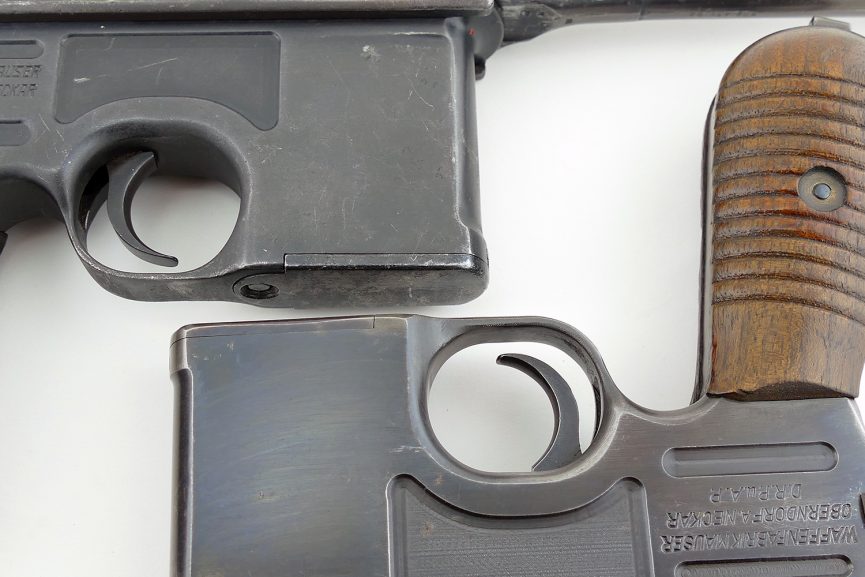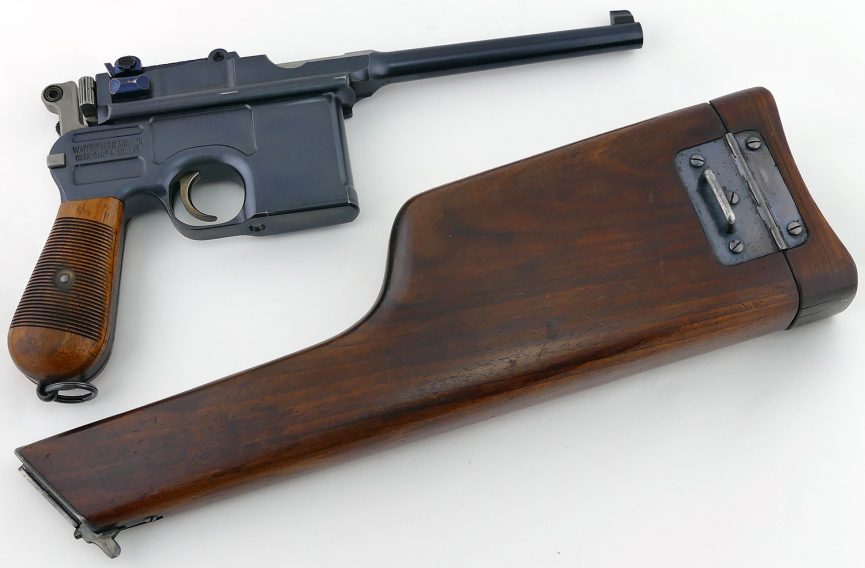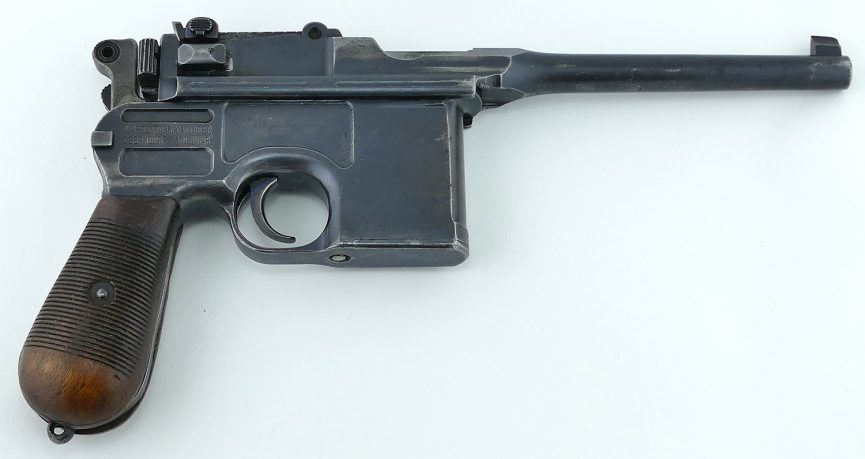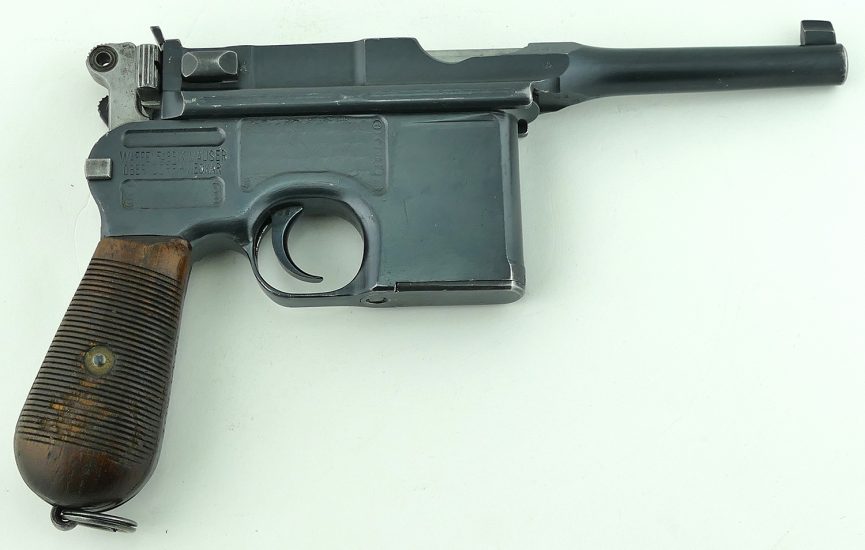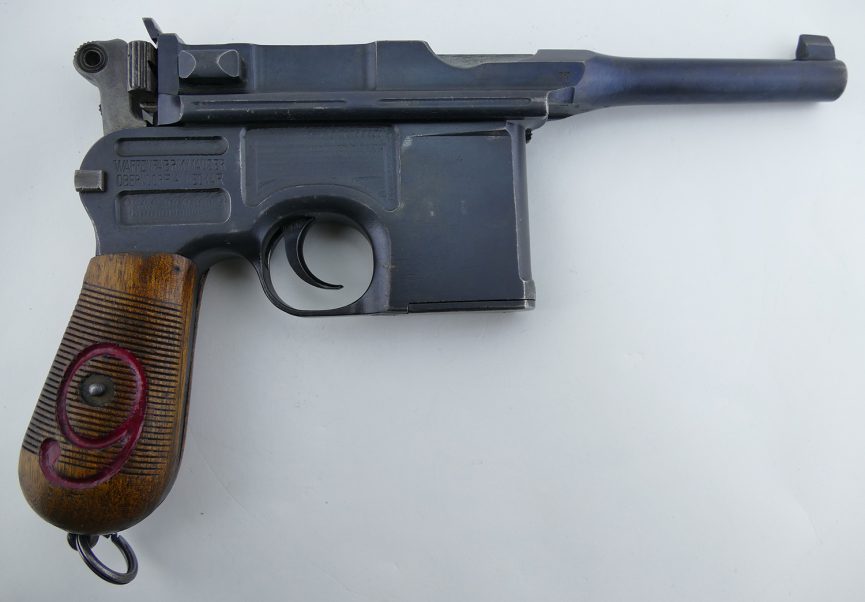Identifying a Refinished or Reblued Mauser C/96 Broomhandle The Mauser C/96 Broomhandle pistol was manufactured between 1896 until about 1936, and over a million examples were made. In the subsequent years, a myriad of fates befell these pistols. A small handful survive in essentially new condition, while others have seen long years of hard service and barely function. Over time, many C/96 pistols were refinished – either by arsenals or private individuals. In this post, we’re going to examine some of the ways to tell if a C/96 has been refinished or otherwise tampered with. Keep in mind that this is just a guide, and that nothing can be a substitute for years of looking at C/96 pistols and being familiar with what looks right. These are just the basics for a beginner contemplating a purchase. First, know what is the proper C/96 finish for a given time period. C/96 pistols got two different kinds of blue … Read More
The “Other” 9mm Mauser Broomhandle
The Elusive and Mysterious 9mm Export Broomhandle Everyone is familiar with the “Red 9” 9mm Luger Broomhandle, but very few people know about its earlier cousin, the 9mm Export Broomhandle. The Mauser C/96 “Broomhandle” Pistol was manufactured from 1896 until approximately 1936. During those years the pistols remained basically the same, going through some internal and external changes, but nothing that changed the basic premise of how the gun worked. C/96 pistols were primarily chambered for the 7.63mm Mauser cartridge, although a notable run were made for the German Military in 9mm Luger during WWI. Beginning in the years prior to WWI, Mauser realized that a more powerful cartridge might be of interest to some of its foreign customers, so they designed a 9×25 cartridge, called the 9mm Mauser Export. This is a straight walled 9mm shell, with a 25mm long casing. In contrast, the 9mm Luger is a 9mm … Read More
4 Digit Wartime Commercial Mauser C/96 Broomhandle Pistol
Re-examining the “Scandinavian Contract” Mauser C/96 Broomhandle We get a lot of WWI and WWII c/96 “Broomhandle” pistols here at Parker’s gun store. In this post, we will be looking at an example of an unexplained contract block of C/96 Pistols made in the WWI era. These guns are sometimes called “Scandinavian Contract” guns, but no documentation has ever been produced linking them to a Scandinavian country. In all respects, these pistols are regular Wartime Commercial WWI guns. They have standard Mauser markings on the right receiver, and standard Mauser markings on the top of the chamber. The hammer is marked with “NS,” for Neue Sicherung (New Safety) indicating production between approximately 1914, and the advent of the 1930 Commercial model. Their finish is definitely below Mauser’s peacetime standards, with many machining marks and a general look of rushed production. The serial numbers of observed guns beseems to fall mostly … Read More
Mauser C/96 Red Nine 1920 Rework Norweigan Military Issue
Identifying Obscure Markings on Mauser C/96 Broomhandle Pistols, Part 2 In a previous post, we examined a Red 9 1920 rework C/96. In this post, we will examine and attempt to decipher the markings on another Red 9 rework, albeit with a much more convoluted trail. This pistol started life as part of the 150,000 gun contract of 9mm C/96’s known as “Red Nines” in WWI. It has the standard Mauser chamber and left side markings, and is standard in all basic respects. In the immediate post WWI era, as part of the Treaty of Versailles, many military C/96 pistols had their barrels cut to 4″ to comply with the terms of the Treaty. This gun had its barrel cut, the rear tangent sight removed and replaced with a brazed-on notch sight, and at some point the Red 9 grips were replaced with a set of unmarked standard wood grips. … Read More
Mauser C/96 Red Nine 1920 Reworked Pistol
Identifying Obscure Markings on Mauser C/96 Broomhandle Pistols, Part 1 One of the most fascinating aspects of dealing and collecting in antique firearms like we do daily here at Pony Express Firearms is tracing the history of a particular gun. It’s one thing to be able to generally identify the make and model of a pistol, it’s another to know exactly where it saw service, what units it served with, and sometimes to even trace a gun’s whole service history. That’s why being able to identify obscure unit and arsenal markings is a worthwhile endeavor. In the next two posts we’ll be examining two Mauser C/96 pistols, both of which vividly illustrate how markings trace a gun’s history and affect value. This first gun started out life as a standard C/96 pistol, made in a contract of 150,000 guns for the Imperial German Military in WWI. These guns were numbered in … Read More

